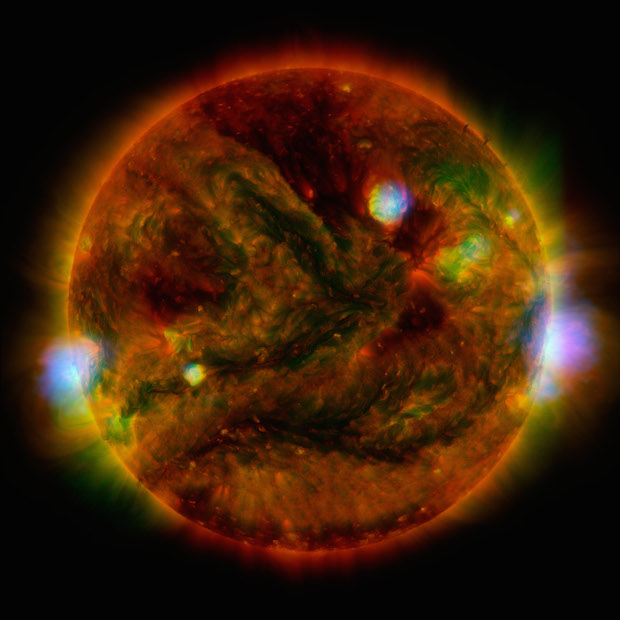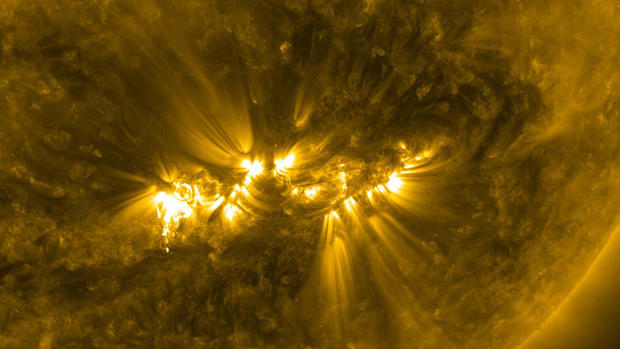X-rays from the sun reveal a rainbow of colors
It's easy to think of the sun as simply a bright, orange ball.
But thanks to high energy X-rays dancing on its surface, NASA's Nuclear Spectroscopic Telescope Array (NuSTAR) was able to snap an image that showed the sun displaying a rainbow of colors.
The high-energy X-rays seen by NuSTAR are shown in blue, while green represents lower-energy X-rays from the X-ray Telescope instrument on the Hinode spacecraft, named after the Japanese word for sunrise.
Iain Hannah, of the University of Glasgow, was planning to present the image Wednesday at the National Astronomy Meeting in Llandudno.
"We can see a few active regions on the sun in this view," Hannah said. "Our sun is quieting down in its activity cycle, but still has a couple of years before it reaches a minimum."
Those active areas are filled with flares, which are giant eruptions on the surface of the sun that spew out charged particles and high-energy radiation. Due to its extreme sensitivity, NuSTAR's telescope cannot view the larger flares. But it can help measure the energy of smaller microflares, which produce only one-millionth of the energy of the larger flares.
NuSTAR, which is often used to examine the mysteries of black holes, supernovae and other high-energy objects, may also be able to directly detect hypothesized nanoflares, which would be only one-billionth the energy of flares. Nanoflares may help explain why the sun's atmosphere, or corona is so much hotter than expected. They would be hard to spot due to their small size. However, nanoflares may emit high-energy x-rays that NuSTAR has the sensitivity to detect.
Astronomers suspect that these tiny flares, like their larger brethren, can send electrons flying at tremendous velocities. As the electrons zip around, they give off high-energy X-rays.
"We still need the sun to quiet down more over the next few years to have the ability to detect these events," said Hannah, explaining that, while the sun is approaching the quiet end of its roughly 11-year activity cycle, it has been showing bursts of high activity.
Astronomers are also excited to use NuSTAR's images of the sun to pinpoint where energy from flares is released. While it is known that the energy is generally liberated in the upper solar atmosphere, the locations and detailed mechanisms are not precisely known.
"What's great about NuSTAR is that the telescope is so versatile that we can hunt black holes millions of light-years away and we can also learn something fundamental about the star in our own backyard," said Brian Grefenstette, of the California Institute of Technology in Pasadena, an astronomer on the NuSTAR team.

